The Top 10 Website Mistakes Killing Your Conversion Rates
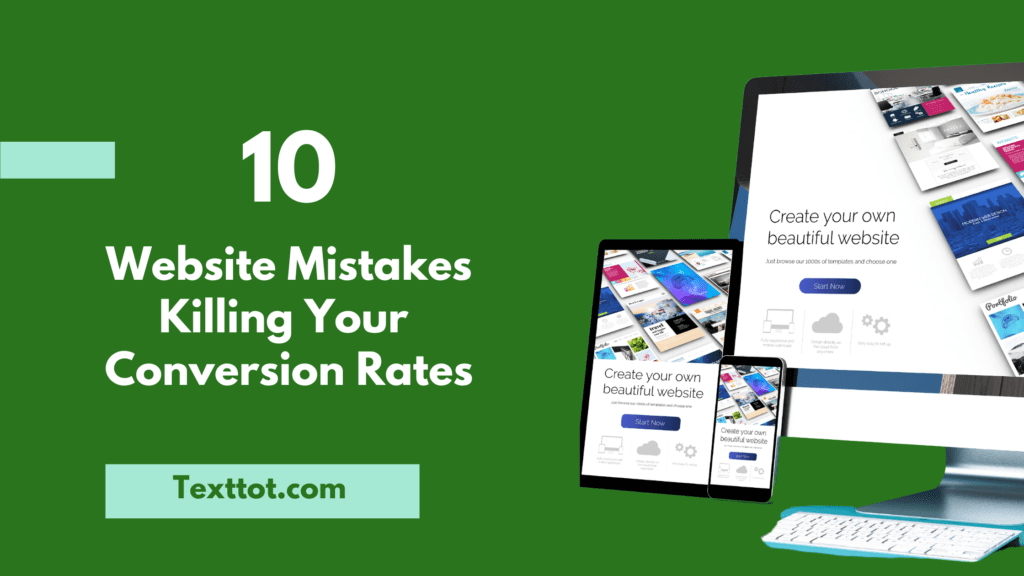
Your website is often the first impression potential customers have of your business, and it should be converting leads into customers. But if it’s not, you’ll be losing sales.
If your conversion rates are low, you can always turn it around. You only need to identify what’s stopping visitors from taking action and fix the problem.
The good news? Whatever website mistakes that you’re making is fixable. We’ve done an indepth research and have come up with these 10 common and killer mistakes. The best part is that we’ll show you how to fix them too. So, let’s get into it.
Table of Contents
1. Slow Loading Speed

A slow website drives potential customers away before they even see what you offer. In fact, 53% of users abandon a site that takes longer than three seconds to load. It also increases bounce rates, hurts SEO rankings, frustrates users, and costs you sales.
To fix this issue, you need to first optimize the images you have on your website, reduce unnecessary plugins, and enable Gzip compression.
You can also use a Content Delivery Network (CDN) to distribute content efficiently, minimize HTTP requests, and enable browser caching.
In addition, choosing a fast, reliable, and reputable hosting provider will make a big difference as they’ll offer expert support, automatic backups, and robust security measures to ensure your website runs smoothly and efficiently.
2. Confusing Navigation
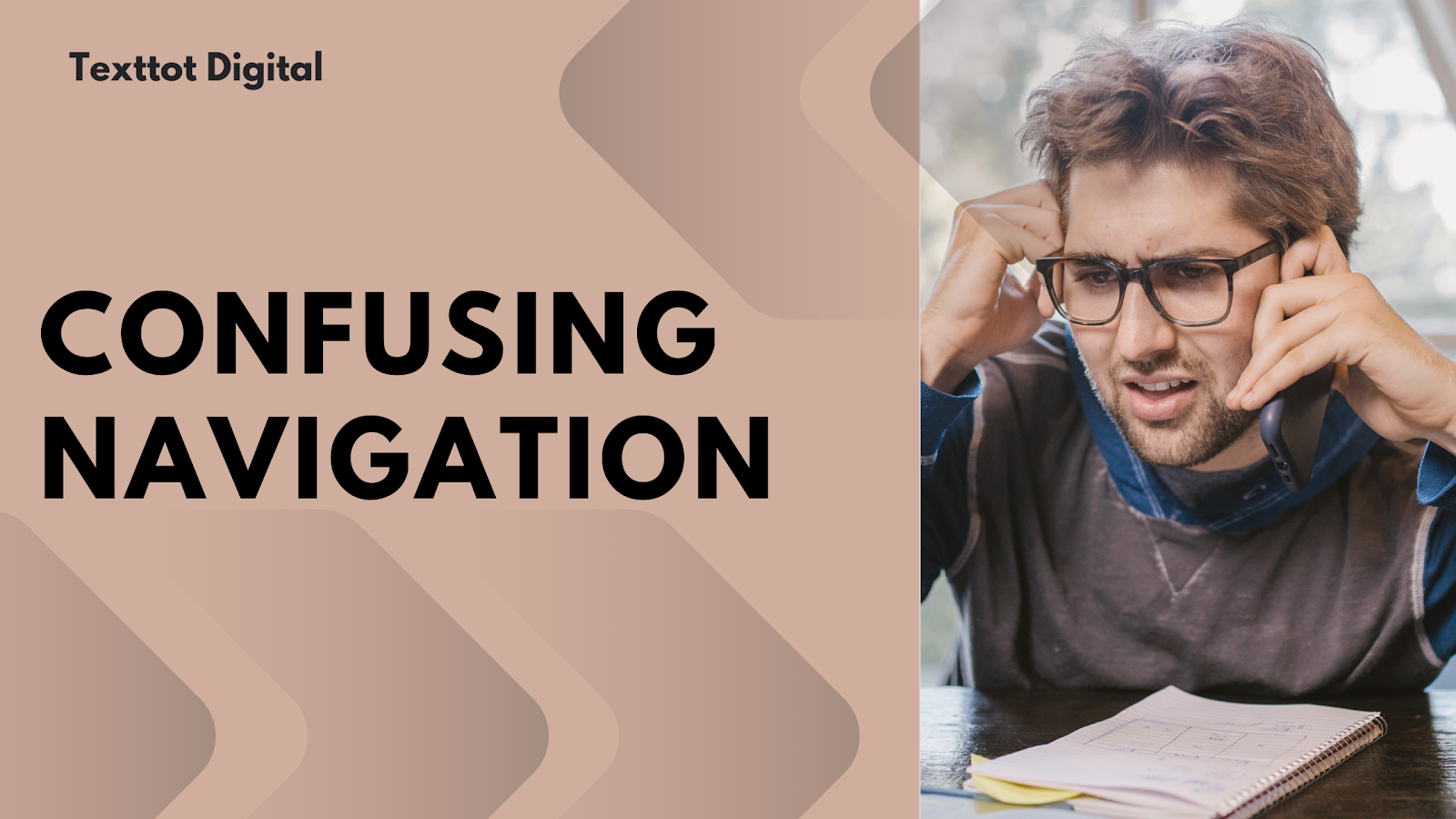
When visitors land on your website, they expect to find what they need quickly and easily. But if they’re unable to find their way around your website, they’ll get frustrated and leave, costing you potential leads and sales.
Poor navigation leads to higher bounce rates, fewer conversions, and a frustrating user experience. If key pages like products, services, or contact information are hard to find, people won’t stick around to figure it out.
A well-structured site with clear categories, a search bar, and simple, consistent navigation keeps users engaged and encourages action.
So make sure you prioritize important pages, limit menu items, add a search bar, and regularly test user experience to ensure seamless navigation and higher conversions.
3. Poor Mobile Optimization
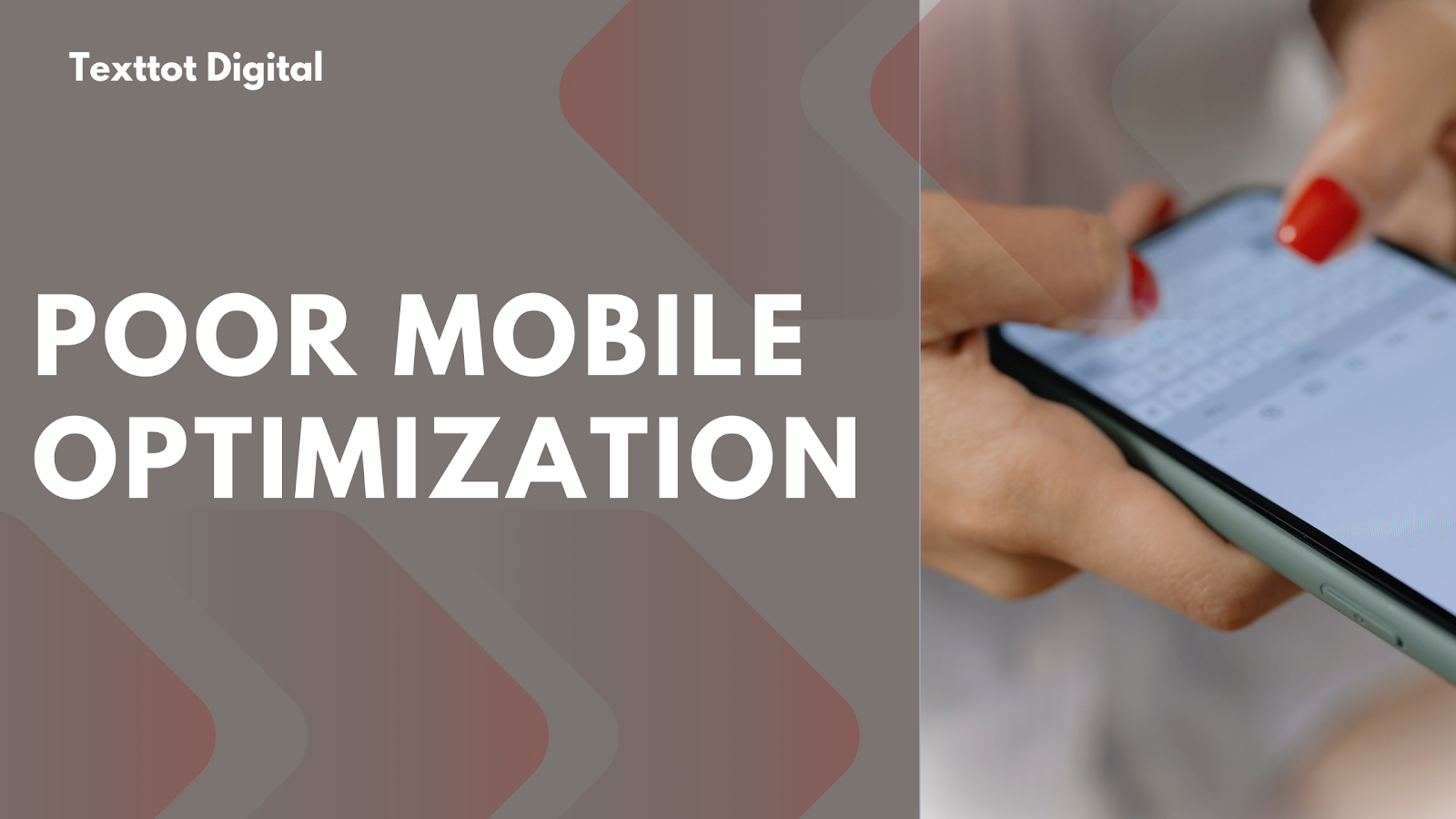
If your website isn’t optimized for mobile devices, you’re likely losing out on a huge chunk of potential customers. Recent studies as of September 2024 show that over 60% of web traffic comes from smart mobile devices.
This shift in user behavior has made mobile optimization an important factor in a website’s SEO strategy. With more people browsing the web on their smartphones than ever before, mobile optimization is no longer optional, it’s essential.
A site that doesn’t work well on mobile frustrates users, lowers engagement, and hurts SEO since search engines prioritize mobile-friendly websites.
What’s the solution? First, start with a responsive design, a simplified layout, and fewer intrusive pop-ups.
Then regularly test your site on different devices so that you can ensure a smooth experience for all users.
When you optimize your website for mobile devices, you improve usability, boost your search rankings, and increase your conversions.
4. Weak or Missing Call-to-Actions (CTAs)
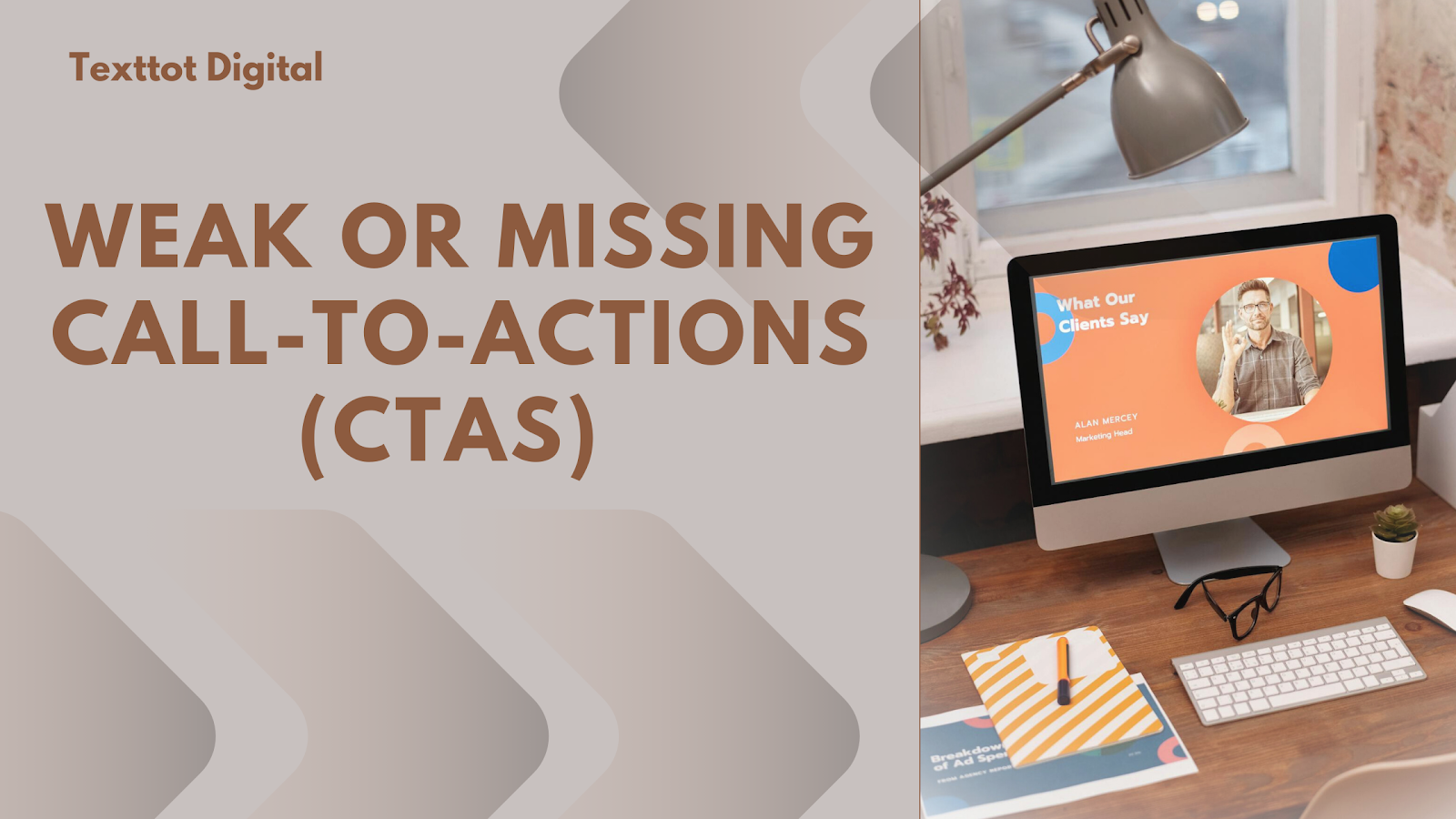
A website without strong CTAs is like a salesperson who never asks for a sale. A Call-to-Action (CTA) is what tells leads what to do next; whether it’s making a purchase, signing up for a newsletter, or booking a consultation.
If your CTAs are weak, unclear, or missing altogether, leads won’t take action, thereby leading to lost conversions.
A vague CTA like “Click Here” or “Visit” also doesn’t tell visitors what they’ll get, so use clear, action-oriented CTAs like “Get Your Free Quote Today” or “Start Your Free Trial Now.”
Another great tip is to place your CTAs strategically on your web pages and use contrasting colors to make them stand out visually.
5. Cluttered Design

A cluttered website overwhelms visitors and makes it harder for them to focus on what matters.
Images on your homepage can boost conversions, but overdoing it, along with too many fonts, colors, or pop-ups, creates visual noise that drives people away. When users feel lost or frustrated, they’re more likely to leave without taking action.
The best approach is to keep things clean and simple. Stick to a consistent color scheme, limit fonts, use white space to improve readability, and organize content logically.
When your website is well-structured and visually balanced, visitors will find it easier to engage and you’ll find the conversion process more seamless.
6. Lack of Trust Signals
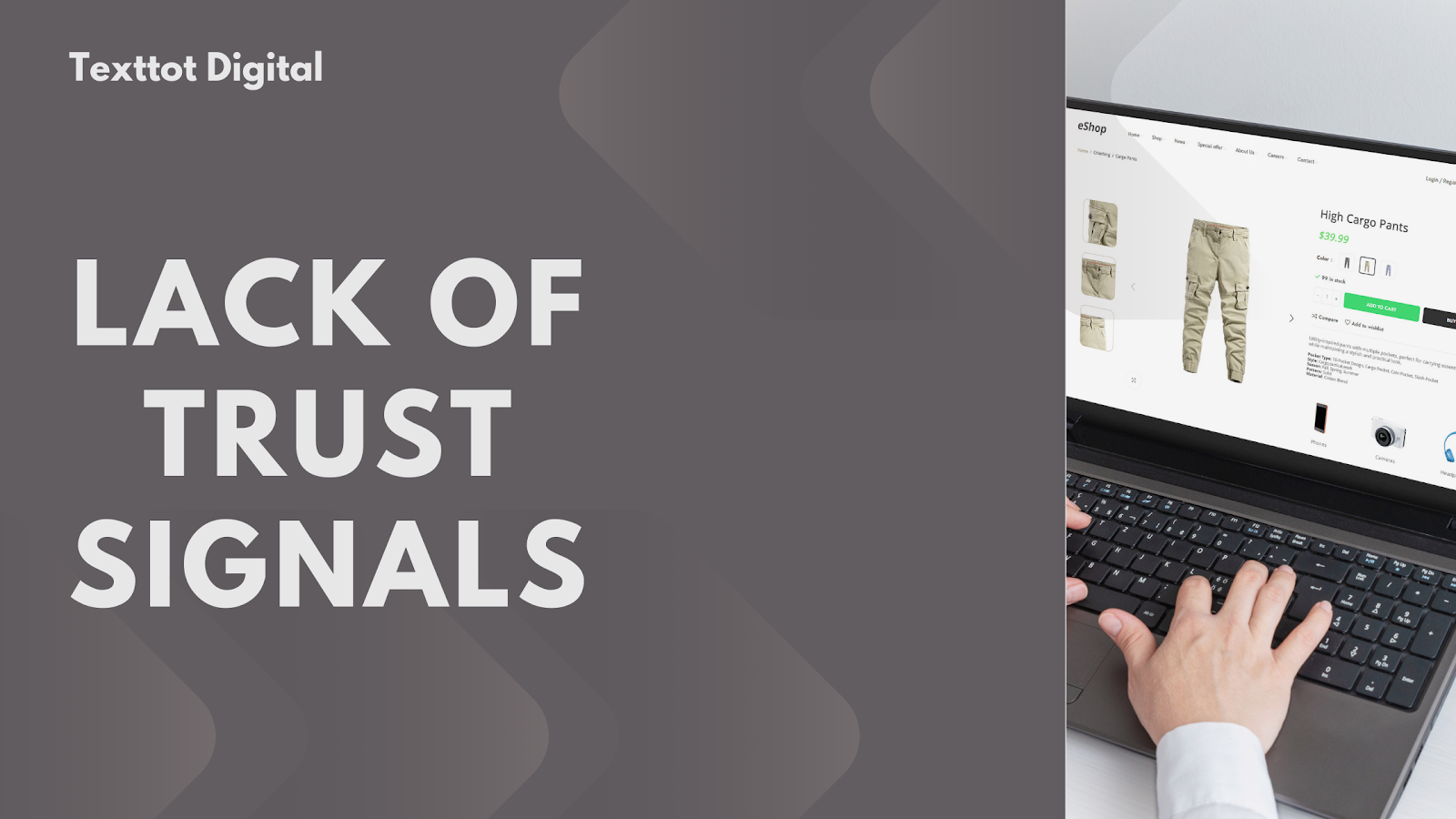
If people don’t trust your brand, they won’t buy from you. Without trust signals, visitors hesitate to share personal information, make a purchase, or engage with your content.
Adding credibility indicators like security badges, testimonials, and customer reviews can boost conversions by 36% and reassure potential buyers.
To build trust, secure your site, display payment security badges, and provide clear contact details. Showcasing real customer feedback, industry certifications, and awards helps as well.
A transparent refund and privacy policy can also go a long way in making visitors feel confident about doing business with you.
7. Poorly Written Content

Your website’s content speaks volumes about your business. If it’s confusing, poorly written, or full of errors, visitors will lose interest, question your credibility, and leave without taking action.
Whether it’s grammar issues, unclear messaging, or lack of SEO, poor content can cost you conversions.
What do you do? Keep your writing clear and concise, double-check grammar, use keywords strategically, and format text with headings and bullet points.
And you can send a message to create good SEO optimized content or get rid of the poor content on your website.
8. Complicated Checkout Process

Another huge mistake that is killing your conversion rates is a complicated checkout process. If customers find it too long, confusing, or full of unnecessary steps, they’ll leave before completing their purchase.
Hidden fees, required account sign-ups, and poor payment options can also frustrate your customers and drive them to your competitors with a smoother process.
As a solution, you can minimize the number of steps involved, offer guest checkout because not everyone wants to create an account, and use a progress indicator to show the number of steps remaining.
Also, display total pricing upfront to ensure transparency and provide multiple secure payment options like credit cards, PayPal, Apple Pay, etc.
9. No Search Engine Optimization

If your website isn’t optimized for search engines, you’re missing out on potential traffic and conversions. Without Search Engine Optimization (SEO), your site won’t rank well on Google or other search engines, meaning new customers won’t find your business.
Even if you have a great product or service, poor SEO means you’re invisible to potential customers.
SEO is a primary step in reaching potential customers. Optimize images with alt text, create high-quality content, build internal links, and ultimately, make use of keywords naturally in your content, meta titles, and descriptions.
10. Ignoring Analytics and A/B Testing

A/B testing is a method that works by comparing two versions of a web page, ad, email, or any other digital element to see which one performs better. It helps businesses optimize conversion rates by making data-driven decisions rather than making guesses.
If you’re not tracking your website’s performance, you won’t know what’s working or what’s costing you conversions. Ignoring data means missed opportunities to improve conversions, optimize content, and refine your marketing strategy.
To fix this, use Google Analytics to track traffic and conversions, identify where users drop off, and make continuous improvements based on insights. Running A/B tests on CTAs, landing pages, and headlines can fine-tune your strategy and boost your conversion rates.
Conclusion
Your website should be your most powerful sales tool, and it should make it easy for leads to take action, whether that’s buying a product, signing up for your newsletter, or reaching out through a contact form.
When your site is well-designed, everything flows smoothly. But if yoou are making any of the website mistakes we have listed above, people won’t stick around long enough to convert.
At Texttot Digital, we are experts at handling your website. We’ll optimize your website for speed, SEO, mobile-friendliness, and conversions, so you can focus on what you do best, running your business. Reach out to us today for your website design needs.
Frequently Asked Questions
How Does Website Performance Affect Conversion Rates?
Website performance directly impacts conversion rates because speed, usability, and responsiveness determine user experience. A slow or poorly optimized website frustrates leads, leading to higher bounce rates and lower conversions.
How Do You Know If A Conversion Rate Is Good?
A good conversion rate varies by industry, product or service provided, or even the target. But the average is 2% to 5%, with top-performing sites reaching 10% or more.
How Reviews Affect Conversion Rates?
Customer reviews significantly impact conversion rates by building trust, credibility, and social proof. Studies show that 97% of consumers read reviews before making a purchase, and products with positive reviews can see a conversion rate increase of up to 270%.
Does Conversion Rate Matter?
Yes, it matters. A high conversion rate means you spend less on your marketing effort while gaining more paying customers.
Your website is often the first impression potential customers have of your business, and it should be converting leads into customers. But if it’s not, you’ll be losing sales.
Affiliate Disclosure
Some of the links on Texttot.com may be affiliate links. This means we may earn a small commission if you make a purchase through these links, at no extra cost to you. We only recommend products and services we trust and believe add value to our audience.